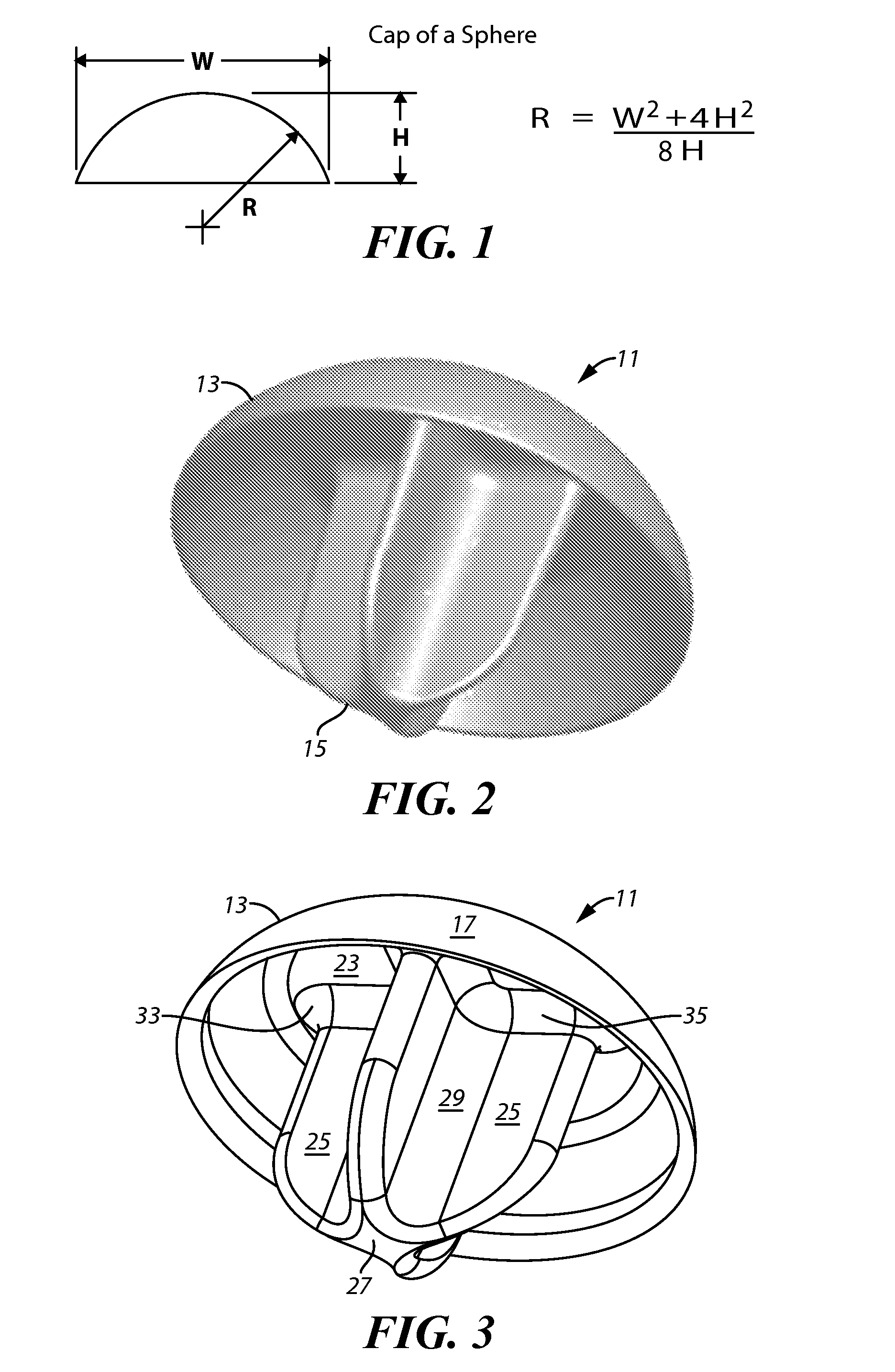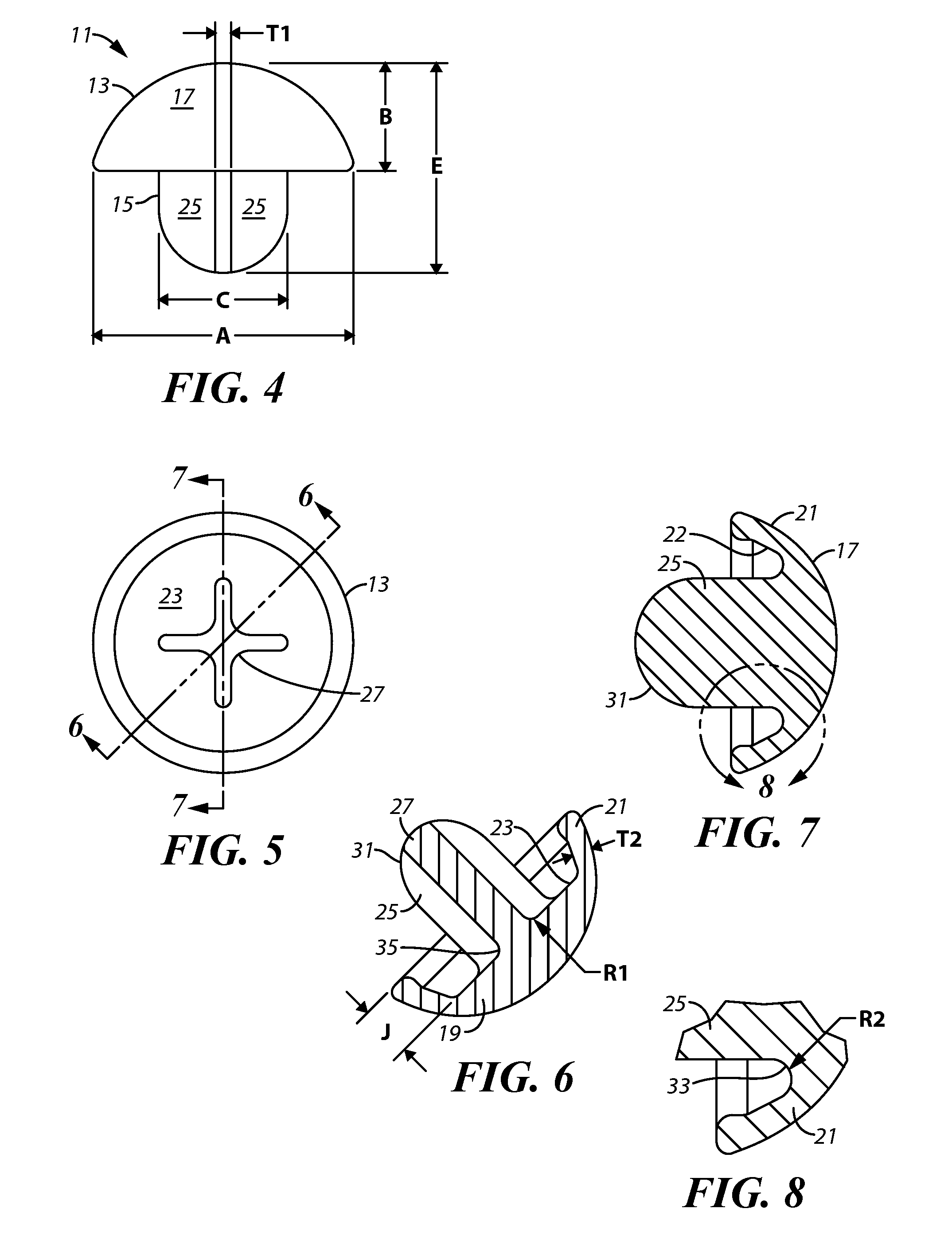Humeral head resurfacing implant
a humeral head and implant technology, applied in the field of humeral head arthroplasty, can solve the problems of difficult access to the glenoid, loosening of glenoid replacement components, and limited bone mass of glenoid, so as to improve the interior/stem construction, improve the strength and surface area of the stem without excessive removal of bone, and improve the effect of interior/stem construction
- Summary
- Abstract
- Description
- Claims
- Application Information
AI Technical Summary
Benefits of technology
Problems solved by technology
Method used
Image
Examples
Embodiment Construction
[0034]Very careful engineering and innovation was required to design a pyrolytic carbon-graphite humeral head resurfacing implant that will meet the strength and performance requirements of such a prosthesis while still conserving bone, which is a prime objective of any such resurfacing implant.
[0035]Assuming the articular portion of the humeral head is spherical, its articular outer surface can be described as generally that of a spherical cap having the characteristic dimensions of height (H), radius of curvature (R) and width (W) as illustrated in FIG. 1.
[0036]The assumption that the humeral head is spherical is only partially accurate because the native humeral head is actually slightly oval-shaped, with its base width in the anterior / posterior direction being about ninety-two percent of the width in the superior / inferior direction. However, from an overall consideration standpoint, considering the humeral head to be a segment of a sphere is a reasonable assumption, and the head...
PUM
| Property | Measurement | Unit |
|---|---|---|
| Fraction | aaaaa | aaaaa |
| Fraction | aaaaa | aaaaa |
| Fraction | aaaaa | aaaaa |
Abstract
Description
Claims
Application Information
 Login to View More
Login to View More - R&D Engineer
- R&D Manager
- IP Professional
- Industry Leading Data Capabilities
- Powerful AI technology
- Patent DNA Extraction
Browse by: Latest US Patents, China's latest patents, Technical Efficacy Thesaurus, Application Domain, Technology Topic, Popular Technical Reports.
© 2024 PatSnap. All rights reserved.Legal|Privacy policy|Modern Slavery Act Transparency Statement|Sitemap|About US| Contact US: help@patsnap.com










